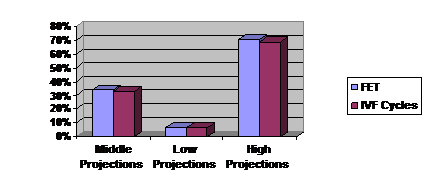Use of Assisted Reproductive Technology Continues to Increase in the United States
Advances in successful assisted reproductive technologies have enabled clinicians to further aid their patients who would otherwise be unable to conceive. However, little is known about this trend and its continued future growth.
Advances in successful assisted reproductive technologies have enabled clinicians to further aid their patients who would otherwise be unable to conceive. However, little is known about this trend and its continued future growth. Thus, Dr Jason Yeh, resident physician of obstetrics and gynecology at Duke University Medical Center, and colleagues leveraged data from the Society for Assisted Reproductive Technology (SART) to gain some insight into its practice to approximate its growth in the future. They presented their findings at the American Congress of Obstetricians and Gynecologists’ 59th Annual Clinical Meeting in Washington, DC.
To estimate the growth, the researchers first determined annual age-specific in vitro fertilization and frozen embryo transfer (FET) rates from 2003 through 2008 based on SART’s data on assisted reproductive technology use by age group. In doing so, Yeh and colleagues found that the rate of IVF cycles increased from 13.2 per 10,000 to 15.4 per 10,000 between 2003 and 2008 for women between the ages of 20 and 49 years. During the same period and for the same age group, the FET rate increased from 2.2 per 10,000 to 3.4 per 10,000.
Yeh and associates applied those calculated rates to the US Census Bureau population projections for 2010 to 2050 to estimate future demand for IVF and FET. Based on those calculations, the researchers believe that IVF cycles will increase 32.7% from 97,680 in 2010 to 129,587 in 2050. Similarly, they expect FET will increase 33.7%, with 28,845 in 2050 as compared with the 21,568 cases reported in 2008. After conducting a sensitivity analysis, the researchers calculated low, middle, and high projection estimates (Figure), all of which indicated continued growth of assisted reproductive technologies.
Figure. Percent change for low to high projection estimates for IVF and FET rates.

“Improvements in technique have led to more treatment options, higher live birth rates and decreased multiple gestations,” the authors explained. “Predictions based on current rates indicate that the use of ART will increase significantly over the next 40 years, which has important implications for future care providers and healthcare policy.”
More Information
Society for Assisted Reproductive Technology
Related Content
Elective Single Embryo Transfer Results Result in Improved Maternal, Perinatal Outcomes
Uterine Environment, More Than Egg Quality, Influences Obstetrical Outcomes
Reference
Yeh JS, Shah AA, Wu JM. Recent trends in use of assisted reproduction in the United States and predictions for the future. ACOG Annual Meeting. Poster 142. April 30, 2011.
S1E4: Dr. Kristina Adams-Waldorf: Pandemics, pathogens and perseverance
July 16th 2020This episode of Pap Talk by Contemporary OB/GYN features an interview with Dr. Kristina Adams-Waldorf, Professor in the Department of Obstetrics and Gynecology and Adjunct Professor in Global Health at the University of Washington (UW) School of Medicine in Seattle.
Listen
